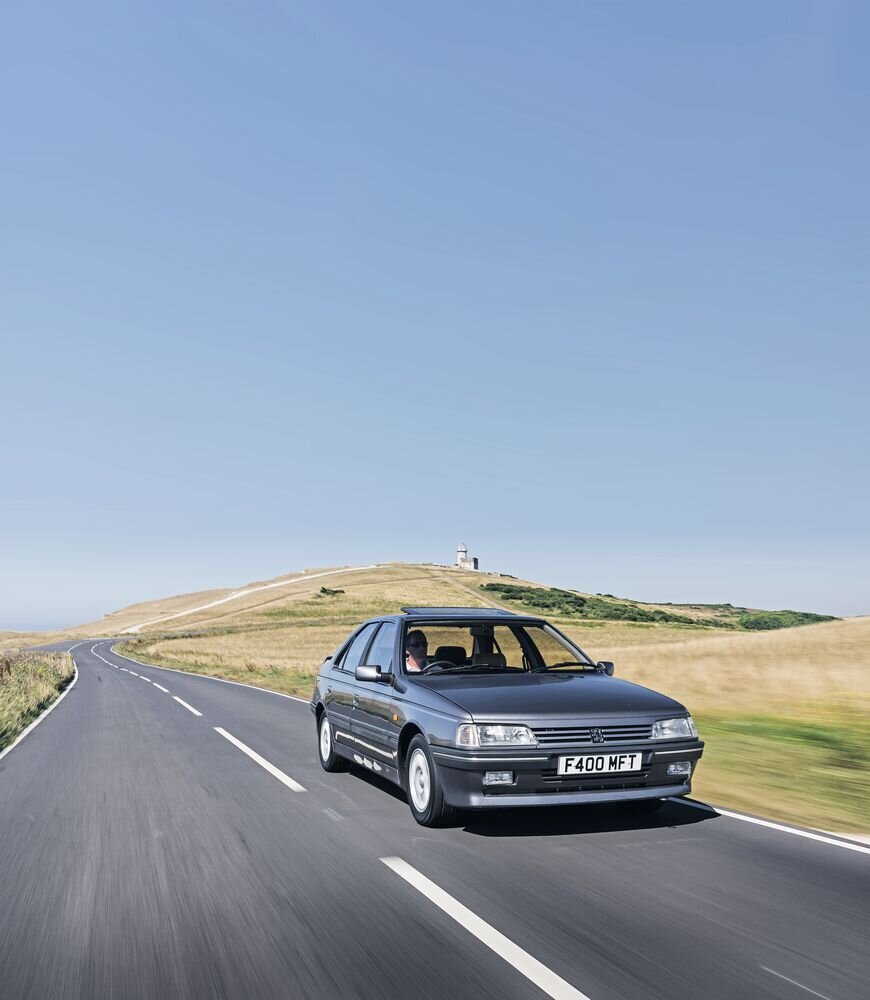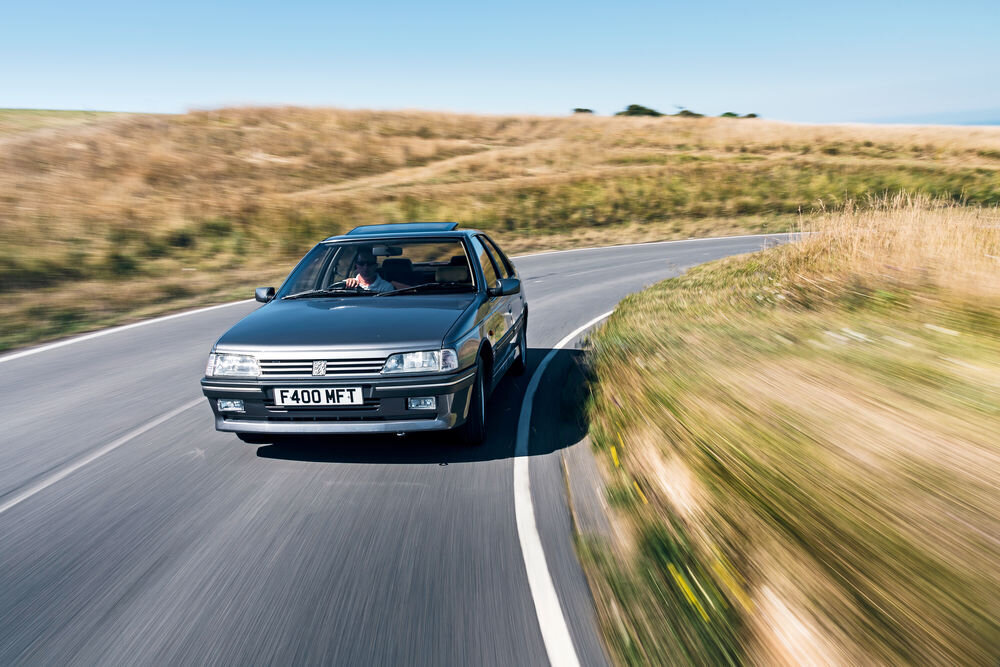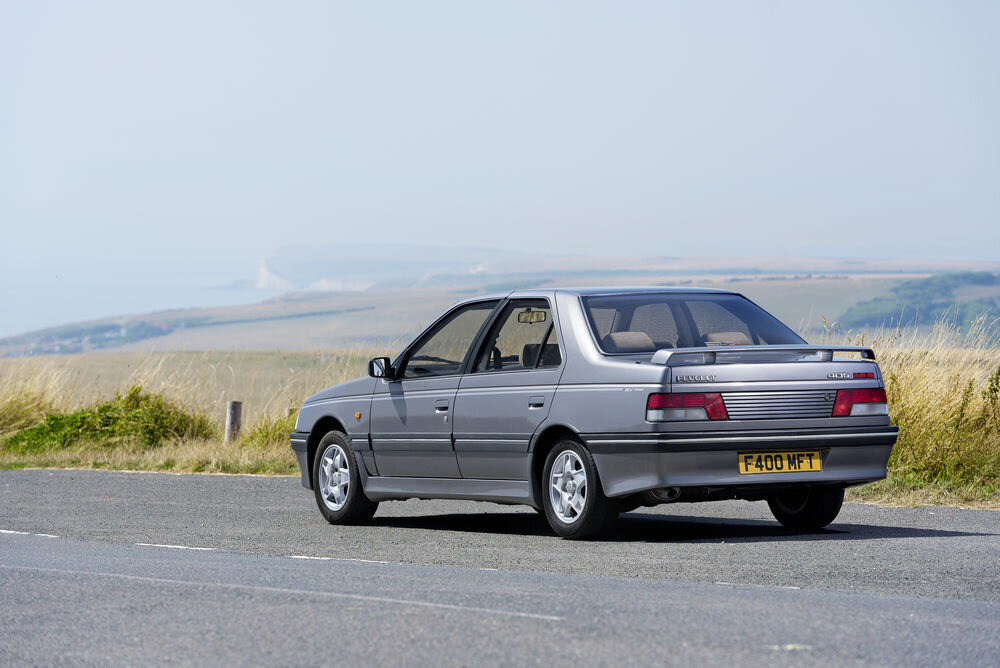This hens-teeth Peugeot 405 Mi 16 reveals why it was one of the era’s greatest Q-cars, even if it's overshadowed by its GTI brother. Every once in a while, a manufacturer gets it bang-on the money with a car.
Peugeot 405 MI 16 specs
Engine 1905cc, 4-cyl, DOHC Transmission 5-speed manual Power 155bhp@6500rpm
Torque 131lb-ft@5000rpm 0-60mph 8.6sec Top speed 137mph Economy 31mpg
This is a great shame and also quite a feat, given the Mi 16’s healthy production run from 1987-1992. In fairness, it’s unanimous that the 405’s all-aluminium 2.0-litre is an absolute peach. If you’re more partial to a crisp, hard-revving twin-cam than anything forced-inducted, then the all-aluminium XU9J4 has to be on your bucket list of motors to experience. But, this doesn’t mean it’s better off anywhere other than in the car it was fitted to in the first place. As a package, the 405 Mi 16 is sublime – mixing big-saloon practicality with giggle-inducing handling and looks that don’t scare old ladies, but will get you nods of approval from those who know.
It’s a pretty accurate assumption to make that a lot of flashier motors got shown up by Mi 16s back when they were new. The owner of this fine example tells me it’s something he still takes great joy in today, because – to use the tired cliché – it’s a right wolf in sheep’s clothing.
Shaped and styled by the fair hand of Pininfarina, the 405 manages to make a traditional ‘three-box’ saloon shape elegant. It’s a fine car to behold, and that’s before taking into account the cheeky extras that the Mi 16 included – deeper front and rear bumpers with the former sporting two rectangular fog lamps, deep side cladding, a raised boot lid spoiler and racy five-spoke alloy rims. All these cues come together to form a purposeful, sharp look, without being in any way crass or obvious. They merely make you question what might lie beneath the skin of such an otherwise common-or-garden car, with the only confirmations of the 405’s performance bloodline being the black and scarlet Mi 16 boot badge and subtle pinstriping, ending with a ‘16v’ motive on each rear flank.
Popping the door and lowering yourself into the waiting sports recliners, everything seems very civilised and comfortable. More red and black colour scheme in here; the door trims and sports seats feature a fine chequered pattern which – as with the rest of the car’s aesthetic – mix flair with a reined-in, grown up feel. A skinny centre cubby box sits too low for elbow-restage on long journeys, and scratchy, brittle-feeling plastic makes up much of the trim and switchgear. It’s definitely French.
A large dashboard console sweeps across in front of the driver, housing a clean, logical instrument cluster. There are no lairy white dials here, but an oil temperature gauge is another notable addition. And a rev counter – with a 7k redline?! Curiosity well and truly peaked. The chunky three-spoke steering wheel allows a clear view of the dials, and the gearknob is placed well to hand.
Sparking up the engine, revs rise briefly before settling into a hushed but slightly off-beat idle. Getting the 405 rolling is easy; the clutch is surprisingly light and forgiving, and working up through the gears gives no indication of any naughtiness. Steering is power-assisted but gives good feel, and the brakes respond obligingly, if slightly numb on the pedal.
With the Sussex coastline in view and ribbons of fresh tarmac ahead, it doesn’t take much encouragement to get the 1.9’s sixteen valves opening and closing a bit more frantically. Just above 4k is where the XU gets interesting; engine notes change and induction noises become more pronounced as that tacho needle strays temptingly close to the red bit. Rowing up and down the gears quickly becomes second nature, and before you know it, all concentration is on upshifting just before the limiter bounces, then pegging the pedal again as soon as the next cog’s engaged. Sixty mph is easily achievable in second gear, and the shriek of the motorsport-derived lump is addictive. Engines don’t sound like this in modern cars. Not visceral, raw, unmistakeably naturally-aspirated. The long runners on the Mi 16’s inlet manifold and big-valve head can be thanked for its top-end eagerness. It rushes to the red line, then gets there and instantly begs for more.
Even on this early car’s 14-inch wheels, there’s very little sidewall roll into corners. The 405 is all-independent, and the suspension does a superb job of flattening out imperfections while also keeping the body flat; threading a car as large as the 405 through tight bends and switchbacks shouldn’t be anywhere near as easy as it is. A big contributing factor to this is the stiffness of the shell – high door sills and a shallow bootlid help keep the body rigid, allowing the front struts and rear torsion bars to do their work. What’s also immediately apparent is how delightfully light the 405 feels. The car tips the scales at 1108kg, which isn’t much at all for a spacious 5-seater ‘loon with a half-decent boot. You’re aware that you’re piloting a big car of course, it just fools the mind because it doesn’t behave like one at all.
Once used to the slightly dead feel of the brake pedal, the Mi 16 can be set up for corners a treat. Downshift into the power band, quick brake dab, pitch it in, marvel at the lack of understeer, forget you’re driving a family saloon, pin the throttle and ride out of the bend in a fury of tyre chirrup and screaming twin-cam. Then inconspicuously pick the kids up from school and do the weekly shop.
The Modern Classics view
As fast, range-topping saloons go, the Mi 16 is up there with the best of them. Having one on your driveway now is bound to invite more questions than admiring stares from onlookers, but once you get to understand the car properly, it’s hard to ignore how right Peugeot got it.
The star of the show is without a doubt that engine; but the rest of the car works so well around it. Buying one of these rarities now is not only going to cost a pretty penny, it’s going to be bloody difficult as well. They don’t come up often and when they do, Peugeot buffs tend to snap them up quick sharp without too much haggling. Projects have come up recently for around £1500, but a well-sorted 1.9-litre car with its original wheels and history will set you back between four and six grand.
While this may come as a disappointment to many who want the chance to own a 405 Mi 16, it’s still a bargain compared to the more common and borderline extortionate 205 GTI. Moreover, it’s reassuring to know that any of these near-extinct lions that do change hands now will almost certainly be saved, repaired and enjoyed, rather than butchered for their hearts – which can only be a good thing.















